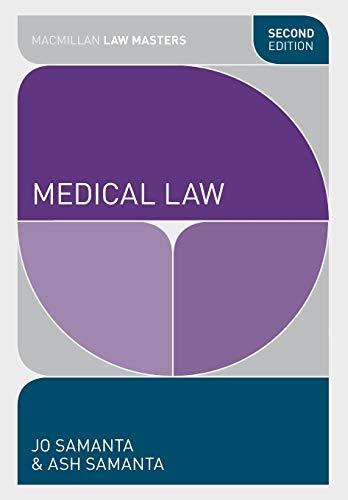Question
1.) A security is an instrument of collateral in the form of a document providing evidence of ownership. 2.) The underlying purpose of the registration
1.) A security is an instrument of collateral in the form of a document providing evidence of ownership.
2.) The underlying purpose of the registration statement and prospectus is to ensure that the investing public will have sufficient information about the business.
3.) The party injured by a misleading registration statement may sue only those who signed the statement.
4.) Any firm engaged in intrastate commerce with assets of over $5 million and at least 100 shareholders must comply with the '34 Act's registration procedures.
5.) EDWARD is the SEC's electronic database system for information about publicly-traded companies.
6.) The standard for whether information is ''material'' is, for the most part, well settled and involves whether the relevant fact would have been viewed as significant by a reasonable investor.
7.) If a business is selling what amounts to a security, that security must be registered with the SEC.
8.) Your best friend works at publicly traded Acme, Inc.Your friend tells you that the CEO and the Chairman of the Board are about to be let go. Based upon this nonpublic information, you sell your stock in Acme, Inc. You are a tippee.
9.) Julio, the president of Con-Gest, Inc., is playing golf with his brother, Luciano. He tells Luciano that Con-Gest, Inc., is about to be purchased by a larger corporation. Luciano, at a dinner later that day, tells Enrico, his best friend, about what Julio told him. Luciano and Enrico make a deal to share any profits that Enrico makes in trading in Con-Gest stock. Assume that Julio, Luciano, and Enrico all purchase Con-Gest stock before the merger is announced, and all sell the stock (at a very large profit) after the merger is announced. Which, if any, of these three are potentially guilty of illegal insider trading?
A. Julio only.
B. Julio and Luciano.
C. Julio and Enrico.
D. Julio, Luciano, and Enrico.
10.) Rachel Offset is a financial printer who prints (among other things) takeover bids. By looking at information in forms she was printing, Offset was able to figure out the identities of a bidder and a target in an upcoming takeover bid. Using this information (which she does not reveal to anyone else), she purchased stock in the target before the bid was announced and sold after the takeover attempts became public knowledge, thereby reaping large profits. Will she be found guilty of insider trading?
A. Yes, because she traded based on information that was not available to the public.
B. Yes, because she was an "insider" of the target firm.
C. No, because she is a complete stranger who has dealt with sellers only in impersonal market transactions.
D. No, because the information she has is readily available to the general public.
Step by Step Solution
There are 3 Steps involved in it
Step: 1

Get Instant Access to Expert-Tailored Solutions
See step-by-step solutions with expert insights and AI powered tools for academic success
Step: 2

Step: 3

Ace Your Homework with AI
Get the answers you need in no time with our AI-driven, step-by-step assistance
Get Started


